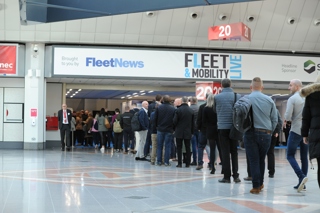Grey fleet and safety issues were high on the agenda for fleets attending the Fleet News round table sponsored by Hitachi Capital in London on May 11.
From the moment the meeting opened, when every attendee volunteered information on grey fleet size unprompted when giving the size of their funded fleets, to lengthy debates about the benefits of training drivers, discussions were dominated by risk management issues.
Cost, delegates agreed, though still important, particularly as part of the grey fleet debate, was becoming a secondary issue as the economy moved into recovery.
Matthew Chase, transport manager at Action for Children, is responsible for 330 funded vehicles, but the organisation has a grey fleet numbering 3,000.
“Grey fleet is the biggest cost to us,” he said. “We’re trying to find the breakeven point but the problem is that people look to the reimbursement as a way of topping up their salary.”
He said staff travelling 100 miles a day or more should be in a company vehicle or rental car rather than in their own car.
The breakeven point for company cars at Action for Children is set at 12,000 miles a year.
Caroline Sandall, fleet manager at Barclays, said: “The trouble with grey fleet is that you only know about the drivers when they claim mileage. There may be people who claim only very infrequently, and maybe just do a few miles here and there.”
Barclays has a grey fleet numbering about 10,000, as many staff work at more than one branch and are required to travel between them.
Sandall said some drivers were surprised to find out that occasional travel between branches qualified as business mileage.
“There are subtleties on what a place of work is,” she said. “Some of our staff work at more than one branch, and many insurance companies want drivers to nominate only one permanent place of work.”
However, for some companies that operate on a global level, the rules and precautions taken in the UK are often seen as a step too far.
Linda Blake, global fleet manager at Diageo, said: “One of the things I’ve noticed globally as soon as I step outside the UK is that people remark that we tick so many boxes.
"In the US sales people are given cash allowances and they go and buy trucks and no one checks the standard or condition of the vehicle.”
She said that staff from overseas that end up working in the UK are given driver training, as well as spouses and nannies where appropriate.
Some of the fleets around the table were critical of driver training programmes that appeared to allow their organisations to fulfil any commitments to risk management, but did not seem to bring about a reduction in accidents or offences.
Steve Goodwin, national fleet and planning manager at Alliance Healthcare, said: “We have online risk assessments but some drivers seem to be repeat offenders and it’s the same people that end up having accidents.
"It means it’s very difficult to justify spending money on improving safety when it doesn’t seem to make any difference.”
Sandall suggested that although there could be elements of training that drivers didn’t enjoy, it was possible to see results if the drivers were shown it was part of their job.
She said: “Classroom training doesn’t necessarily work as a solution, but as part of an overall programme of training that has staff buy-in – then it works.
“I have to undergo training that has limited direct relevance with my day-to-day job, but it’s still important and is one of those things that I have to do. Staff will buy into driver training if it’s presented in the right way.”
Denise Lane, group fleet manager at Capita Group, asked attendees whether they thought on-road training was effective.
Val South, fleet manager at Xerox, replied that training could achieve results in making drivers aware of the level of risk they present on the road.
“During training, one of our drivers broke the speed limit throughout the assessment at a time when drivers would generally be on their best behaviour,” she said.
Johann Toubkiss, buyer in the commercial department at Compass Group, added: “If driver training didn’t work many fleets wouldn’t be seeing the reduction in SMR costs they have seen as a result of it.”
There were concerns that some driver training companies were not committed to improving driver behaviour, but rather ensuring their ongoing support.
It was suggested that fleet operators could mix and match the different elements of training with different companies, with the online risk assessment provided by one organisation and classroom training or on-road training by another.
Goodwin added: “The biggest challenge is getting the profile raised enough so it’s recognised.
People can’t start work without producing their passport, so why not their driving licence? A culture change is needed and we should ensure people can’t claim any business mileage until their vehicle has been authorised.”
Blake suggested that driving licence and insurance policy approval could be made part of the organisation’s employee performance appraisal process and checks could be made by their line managers as part of the appraisal system.
Chase added that he was concerned where merely annual checks are in place for insurance in case it is due to run out soon after the policy was produced for approval, and it could be almost another year that the next check is carried out.
Attendees also tackled the hosts from Hitachi Capital regarding the increasing burden of end of contract charges where the condition of vehicles exceeds the levels of damage agreed for fair wear and tear.
Derek Thornton, head of account development at Hitachi Capital, said: “As an average, costs are going up. The actual cost of repair is going up and what we’re seeing with some bigger fleets is a higher level of staff turnover.”
He added that some members of staff were inheriting ‘recycled’ vehicles and seemed to be less inclined to look
after them.


















Login to comment
Comments
No comments have been made yet.